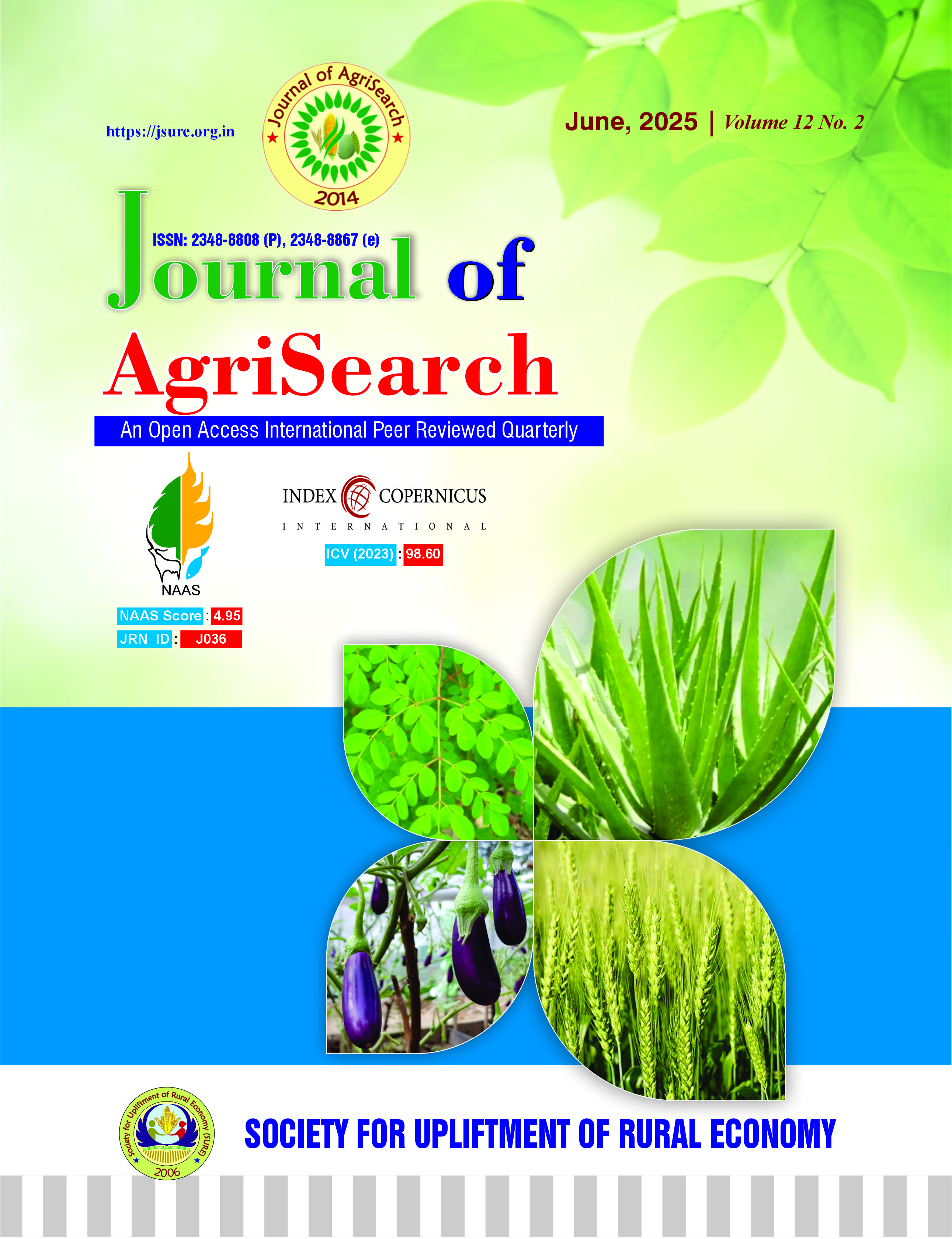In silico analysis of a chloroplast loci for DNA barcoding of Aloe spp.
In silico chloroplast DNA barcoding of Aloe spp.
DOI:
https://doi.org/10.21921/jas.v12i02.15243Keywords:
DNA barcoding, Aloe species, RBCL gene, Phylogenetic analysis, Species resolution, In silico studyAbstract
DNA barcoding has emerged as a reliable tool for species identification, especially in taxonomically complex plant groups such as the genus Aloe. This study employed an in-silico approach to evaluate the efficacy of the rbcL gene locus as a DNA barcode for 20 Aloe species. A total of 70 high-quality sequences linked to voucher specimens were retrieved from GenBank, manually curated to a uniform length of 480 base pairs, and analyzed using multiple sequence alignment and phylogenetic methods. The evolutionary divergence within and among species was estimated using p-distance metrics, revealing high sequence conservation across most Aloe species. Phylogenetic analysis using the Neighbor-Joining method demonstrated that 12 species (60%) formed well-supported monophyletic clades, confirming the rbcL locus's moderate resolution capacity. Species such as A. vera, A. lineata, and A. maculata clustered tightly with high bootstrap values, while few closely related species remained unresolved. The findings suggest that the sample size and incorporating multi-locus analyses will further improve species identification and evolutionary understanding within the genus.
References
Bafeel S O, Arif I A, Bakir M A, Al Homaidan A A, Al Farhan A H, Khan H A. 2012. DNA barcoding of arid wild plants using rbcL gene sequences. Genet Mol Res. 11(3):1934-41.PMID: 22869548. https://doi.org/10.4238/2012.july.19.12
CBOL Plant Working Group. 2009. A DNA barcode for land plants. Proceedings of the National Academy of Sciences 106(31): 12794–12797. https://doi.org/10.1073/pnas.0905845106
Grace O M, Buerki S, Symonds M R, Forest F, van Wyk A E, Smith G F and Klopper R R. 2015. Evolutionary history and leaf succulence as explanations for medicinal use in aloes and the global popularity of Aloe vera. BMC Evolutionary Biology 15(1): 29. https://doi.org/10.1186/s12862-015-0291-7
Hebert P D N, Cywinska A, Ball S L and deWaard J R. 2003. Biological identifications through DNA barcodes. Proceedings of the Royal Society of London. Series B: Biological Sciences 270(1512): 313–321. https://doi.org/10.1098/rspb.2002.2218
Ho V T and Nguyen P M. 2020. An in silico approach for evaluation of rbcl and matk loci for DNA barcoding of cucurbitaceae family. Biodiversitas 21(08): 3879-3885. http://dx.doi.org/10.13057/biodiv/d210858
Kress W J and Erickson D L. 2007. A two-locus global DNA barcode for land plants: the coding rbcL gene complements the non-coding trnH-psbA spacer region. PLoS One 2(6): e508. https://doi.org/10.1371/journal.pone.0000508
Kumar S, Stecher G, Suleski M, Sanderford M, Sharma S, and Tamura K. 2024. MEGA12: Molecular Evolutionary Genetic Analysis Version 12 for Adaptive and Green Computing. Molecular Biology and Evolution 41: 1–9 https://doi.org/10.1093/molbev/msae263
Little D P. 2011. DNA barcode sequence identification incorporating taxonomic hierarchy and within taxon variability. PLoS One 6(8): e20552. https://doi.org/10.1371/journal.pone.0020552
Roy S, Tyagi A, Shukla V, Kumar A, Singh U M, Chaudhary LB, Datt B, Bag S K and Singh P K. 2010. Universal plant DNA barcode loci may not work in complex groups: a case study with Indian berberis species. PLoS ONE 5(10): e13674. https://doi.org/10.1371/journal.pone.0013674
Sarhan S, Hamed F and Al-Youssef W. 2016. The rbcL Gene Sequence Variations among and within Prunus Species. Journal of Agricultural Science and Technology 18(4):1105-15.
Sikdar S, Tiwari S, Sapre S and Thakur V V. 2018. Simple approach for species discrimination of fabaceae family on the basis of length variation in PCR amplified products using barcode primers. International Journal of Current Microbiology and Applied Science 7: 921-8. https://doi.org/10.20546/ijcmas.2018.712.115
Suesatpanit T, Osathanunkul K, Madesis P, Osathanunkul M. 2017. Should DNA sequence be incorporated with other taxonomical data for routine identifying of plant species? BMC ComplAltern Med 17: 437. https://doi.org/10.1186/s12906-017-1937-3
Treutlein J, Smith G F, van Wyk B E and Wink M. 2003. Phylogenetic relationships in Aloe (Asphodelaceae) inferred from chloroplast DNA sequences (rbcL, matK) and AFLP data. Plant Systematics and Evolution 239(1-2): 141-153.
Downloads
Published
Issue
Section
License
Copyright (c) 2025 Sweta Gupta, Punam Sinha

This work is licensed under a Creative Commons Attribution-NonCommercial-NoDerivatives 4.0 International License.
Publisher and Authors

